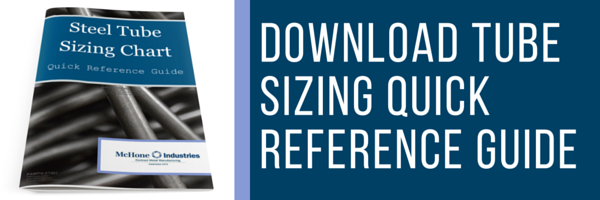
Though the term "steel" is often tossed around when referring to various types of building and engineering materials, you already know there are many different types of steels. That said, we thought it would be worthwhile to weigh some of the key differences between the two popular types of steel tubing: ASTM A500 tubing and A513 tubing.
Read on to learn more about the key characteristics that differentiate these types of steels, from price to application to durability and more.
ASTM A500 Vs. A513 Tubing
ASTM A500 Tubing
If you've got a structural application that will bear loads, then A500 tubing is your best bet, as it's the far more durable of these two types of tubing. A500 tubing comes in different varieties, such as:
- Square
- Rectangular
- Round
The square and rectangular A500 tubing is often referred to as HSS, or hollow structural sections. Another key difference between A500 and A513 tubing is in aesthetics. A500 tends to be more aesthetically pleasing than A513, which makes it an ideal tubing to help accent building architecture.
A good example of this is the Rock & Roll Hall of Fame building in Cleveland, Ohio. Every piece of A500 tubing ordered from the mill also comes with a detailed explanation of its physical properties, which is key to ensuring quality control of the building materials. The same cannot be said for A513 tubing. As a result of its enhanced functionality, A500 tubing typically costs more, but keep in mind that it also does more.
ASTM A513 Tubing
While A500 tubing is used more for durable building purposes, A513 tubing tends to be administered more for commercial, consumer-based applications (think: lawn mower handles and other similar consumer products). This is largely because it can be worked to much tighter tolerances than A500 tubing. It's also much easier to bend and fabricate as a result of this. However, what it makes up for in this category, it lacks in load bearing. Because of its more limited application uses, A513 tubing has a tendency to be less expensive than A500 tubing.
Like any type of steel, deciding between A500 and A513 tubing is largely dependent on what product you're designing. If you're building a commercial or residential structure, you're likely going to want something that can sustain loads, so A500 tubing would be your best bet. But if you're working with more of a smaller-scale project like a lawnmower, workbench, storage rack or something else that may not have the same load demands, then A513 would probably suit the project just fine.
Don’t See What You Need?
If your project is not best suited for A500 or A513 steel tubing based on the properties above, you may want to try another carbon steel -- or another metal altogether. Check out these metal properties charts below to get an even better idea of what will work for your tube production needs:


